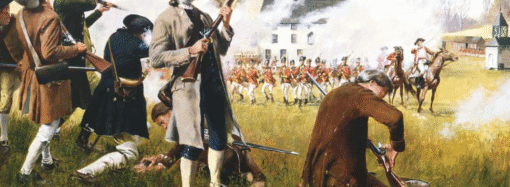This year a Pew report on “Love and Marriage in America” stated an obvious fact: The institution of marriage in our society is continuing its slide toward cultural obsolescence.
Only half of adults continue to bother with marriage, while a significant minority prefer the unconstrained alternative of cohabitation. This last category is up nearly 30 percent from a decade ago. Of those who choose marriage, half will end in divorce.
The statistics speak for themselves. But while the sexual revolution and the irreligiosity of the “nones” and their mutual effects on marriage are often discussed, few realize that the waning of Western marriage began long before our time, during the 19th century age of romanticism.
At first this seems counterintuitive. After all, wasn’t the 19th century the age of Jane Austen and Walter Scott, the authors whose heroes and heroines experienced “true love” leading irresistibly toward a bond of marriage and happily-ever-after?
To be sure, the 19th century refinement of romance, whereby men and women cultivated and enjoyed new levels of emotional attachment, has brought benefits to modern marriage. But romanticism is something else. It regards the emotional bond within marriage as an end in itself, the principal meaning of the relationship and the basis for its permanency. And its emergence two centuries ago marked the beginning of the slide toward singlehood that we see today.
Romanticism’s corrosive properties can be seen in the lives of its greatest proponents. For the English poet Percy Bysshe Shelley (d. 1822), “marriage is hateful, detestable.” A celebrated bard of romantic love, he declared that “a kind of ineffable, sickening disgust seizes my mind when I think of this most despotic, most unrequited fetter.”
Romantics like Shelley built relationships on the shifting sands of the passions, which inevitably prevented their endurance, as suggested by his poem “Mutability.” True love was defined in his verse as passionate desire rather than self-sacrifice, the moral virtue that marriage had historically crowned. Liberated from the fetters of Christian social values (he was an atheist), Shelley deserted his pregnant wife and ran off to the Alps with an alluring girl named Mary, whom he later married when the first wife, in her grief, committed suicide. Inspired by the affair, Mary herself went on to write one of romanticism’s greatest literary monuments, Frankenstein.
A case similar to Shelley’s is George Sand (d. 1876), a female French writer who abandoned a husband and two children to pursue more intense, and therefore more rewarding, relationships than she could find in lawful marriage. From the moment of her divorce to that of her death she managed to write more than fifty novels, most of which celebrated a heroine’s restless longing for emotional fulfillment whatever the cost to those around her. Along the way, Sand herself entered and then exited a series of affairs so numerous as to defy calculation.
Perhaps the most notoriously inconstant romantic lover was Richard Wagner (d. 1883). Like Shelley and Sand, he abandoned the spouse of an early marriage to pursue “free love.” In doing so he also abandoned any respect for marriage. One anecdote from his adultery-ridden life has him seducing the wife of a close friend and supporter, and then going on to sire children by her for years. In the end he claimed her as his own wife, but his pursuit of extramarital romance continued to his dying day. It is said that his death by heart attack was provoked by a confrontation with her after she discovered yet another case of his serial and all-too-romantic marital infidelity.
It is therefore no surprise that the content of Wagner’s operas served to subvert marriage. From the adultery of Tristan and Isolde to the incest of Die Walkuere – whose “Ride of the Valkyries” became a canon of Western musical culture – moral transgression was presented as far more heroic than marital fidelity.
Which makes the famous tune from another opera particularly ironic. The “Wedding March” from Lohengrin has become, without question, the sine qua non for millions of brides as they march down the aisle to a union that, according to recent statistics, is as likely to end in divorce as not.
So, as we look back on the age of romanticism we can delight in the ways it celebrated love. But we would do well to recognize that by rooting marriage in the passions the founders of our modern culture actually undermined what many consider the foundations of a devoted relationship between husband and wife.
—
Image Credit: Pixabay
















Leave a Comment
Your email address will not be published. Required fields are marked with *